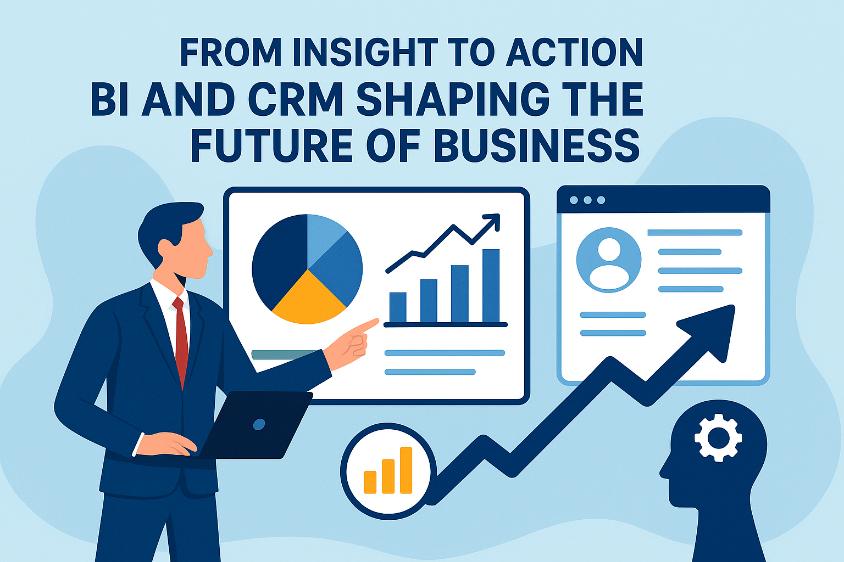In today’s fast-paced digital landscape, data is more than just numbers on a dashboard—it’s the lifeline of modern business. Organizations that can effectively transform raw data into actionable insights hold the key to long-term success. Business Intelligence (BI) and Customer Relationship Management (CRM) systems are at the forefront of this transformation, working together to not only capture data but also to turn it into strategies that improve decision-making, enhance customer experiences, and drive growth.
The Power of BI in Modern Enterprises
Business Intelligence tools provide organizations with the ability to analyze vast amounts of information quickly and accurately. From tracking sales performance to forecasting market trends, BI empowers businesses to see beyond day-to-day operations. Real-time reporting and predictive analytics make it possible to anticipate customer demands and respond proactively.
Instead of reacting to problems after they occur, companies can leverage BI to identify opportunities before competitors do. This makes BI not just a tool for efficiency but a driver of innovation.
CRM as the Customer Connection Point
While BI focuses on insight, CRM systems serve as the bridge between businesses and their customers. A strong CRM system centralizes customer data—purchase history, interactions, feedback—and helps businesses tailor personalized experiences. By aligning with BI insights, CRM doesn’t just track relationships, it deepens them.
For example, BI may highlight that customers in a certain region prefer digital interactions, while CRM ensures campaigns and communications are personalized accordingly. Together, they create a seamless strategy that strengthens loyalty and builds trust.
The Synergy of BI and CRM
The real value emerges when BI and CRM work in unison. Data-driven insights from BI inform CRM strategies, while customer interactions captured by CRM enrich BI datasets. This creates a continuous cycle of improvement:
- Smarter Marketing: Campaigns are designed with precision, targeting the right audience at the right time.
- Enhanced Customer Support: Service teams gain insights into customer pain points before they escalate.
- Informed Decision-Making: Leaders make choices backed by real-time data rather than assumptions.
This integration allows businesses to move from insight to action, ensuring that every decision aligns with customer needs and business goals.
Shaping the Future of Business
Looking ahead, the combination of BI and CRM will only grow stronger. With AI and machine learning, predictive analytics will become even more accurate, while CRM systems will evolve into hyper-personalized platforms. Businesses that embrace this integration now will be better equipped to thrive in a future where customer expectations continue to rise.
Final Thoughts
From data to loyalty, and from insights to action, BI and CRM together shape the backbone of a customer-centric, growth-oriented enterprise. They don’t just provide information—they drive meaningful change. For organizations looking to stay competitive, investing in the synergy of BI and CRM isn’t optional, it’s essential.



